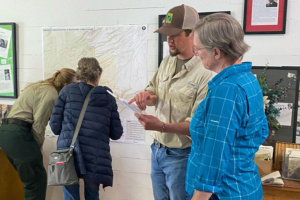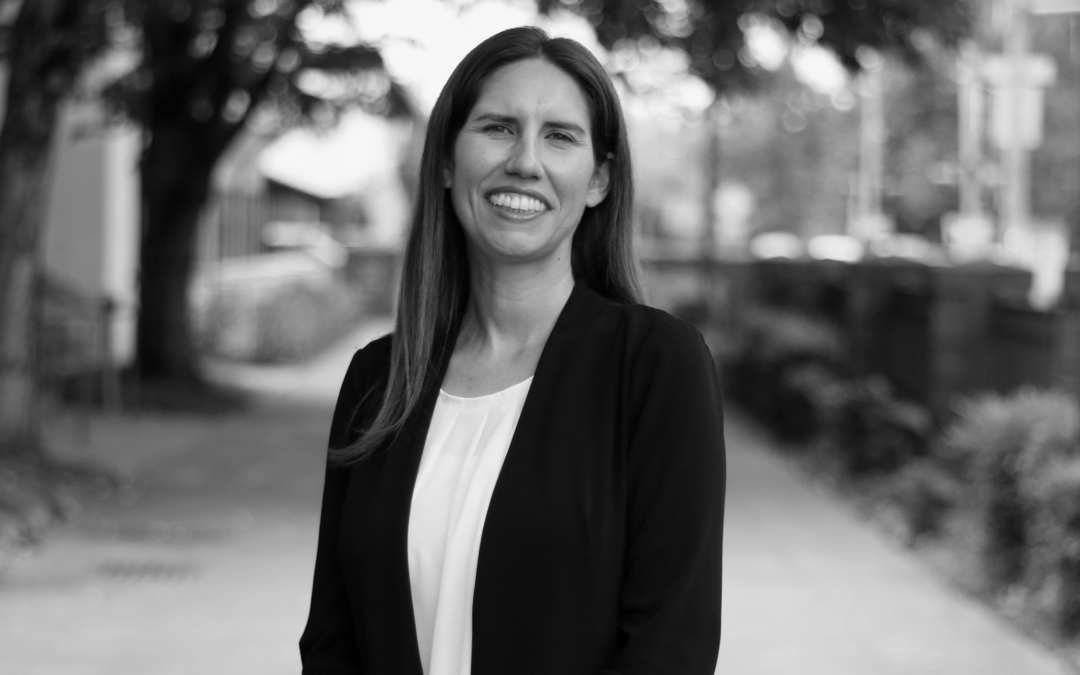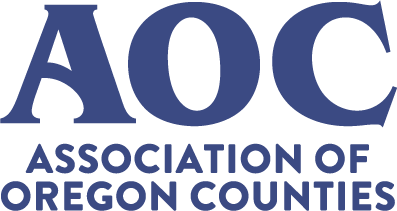
Aug 30, 2024 | AOC Business Partner
Sponsored content contributed by AOC Business Partner: Hinge Health
Hinge Health offers customized and more convenient approach to treat joint and muscle pain. Unlike traditional programs, Hinge Health uses technology to give you a personalized plan, live feedback during exercises, and a team of dedicated experts to support you every step of the way. And the benefits don’t
stop there!
Join Hinge Health by enrolling at hinge.health/cisoregon-newsletter2
Join over 800,000 members who have experienced an average of 68%* reduction in pain and gotten back to doing what they love with the Hinge Health program.
Questions? Hinge Health is here to help!
To talk to a member of the Hinge Health support team, call 1-855-902-2777 or email help@hingehealth.com.
*Participants with chronic knee and back pain after 12 weeks. Bailey, et al. Digital Care for Chronic Musculoskeletal Pain: 10,000 Participant Longitudinal Cohort Study. JMIR. (2020)
Participants must be 18+ and enrolled in a CIS Oregon medical plan administered by Regence BlueCross BlueShield of Oregon. Regence BlueCross BlueShield of Oregon is an Independent Licensee of the Blue Cross and Blue Shield Association. Hinge Health® is a separate and independent company that provides services for CIS members enrolled in a CIS Benefits medical plan administered by Regence.

Aug 30, 2024 | AOC Business Partner
(The Sunset Valley Fire burned agricultural fields south of The Dalles in July 2021. Photo by Jacob Powell)
Sponsored content contributed by AOC Business Partner: OSU Extension Service
Wasco County has been designated as “very high risk” for wildfire, making it a higher risk than 95-100% of other communities in the United States.
Because of this, Kayla Bordelon, the Oregon State University Extension Service regional fire specialist for the Willamette Valley and north Cascades, made Wasco a top priority.
And that is not just talk: Bordelon and other local and regional collaborators have been awarded a nearly $6 million grant for the county through the federal Bipartisan Infrastructure Law, which designated a $1.5 billion investment into wildland firefighting and wildfire resilience.
“Building this funding proposal was definitely a labor of love for the handful of us on the grant writing team,” said Bordelon.
Bordelon is a member of OSU Extension’s Fire Program, created in 2019 to support community and landscape wildfire resiliency across Oregon. She joined the team in 2022 after completing a Ph.D. in environmental science with a focus on fire education from University of Idaho.
A substantial component of the grant funding will create and fund a full-time, countywide wildfire coordinator position with Wasco County. “One of my long-term goals is to build local capacity to coordinate wildfire resilience efforts in the nine counties I serve,” said Bordelon. “My number one priority for this grant was funding this county coordinator position. Investing in people allows us to do more work together.”
The rest of the funding will be spread among several sub-awardees including Wasco County Planning Department, the Oregon Department of Forestry, and OSU Extension and includes projects such as creating defensible space around homes to clearing roadside vegetation that is susceptible to sparking or carrying wildfire.
OSU Extension will lead a project to complete a fuels and forest health assessment of 80,000 acres of private, non-industrial forestland in the county. (Fuel is any material that burns in a fire. In the forest, fuel is vegetation such as grasses, shrubs and trees.)
In this assessment, Bordelon said they will be asking questions like: “What species composition is here? Is it healthy? Is it over-stocked with fuels? Do we have a lot of dead and down fuels on the ground?” This information will help identify areas that need restoration and management. “We can look across this whole landscape and say: Wow, we have this many acres of forestland that are high priority for restoration,” she said.
Since this level of detail is not common for private land “it gives landowners more personalized information about management options while also providing county wildfire practitioners with a widespread picture of forest conditions,” Bordelon said.
With that knowledge, county partners are better prepared to ask for state and federal funding. “We will have a really good sense of exactly what needs to be done and where,” said Bordelon. “That makes us more competitive for federal and state dollars.”
Welcoming community
On her first trip to southern Wasco County, Bordelon described how enthusiastic and welcoming the community was. “I went to the town of Wamic, super small town, population 52 to support a community meeting and gather community input on fire resiliency priorities,” Bordelon said. “I showed up hours before the meeting because I wanted to be prepared and didn’t know what to expect.”
When she walked inside, she found “a dozen or more people in The Grange kitchen making lunch for a huge crowd.”
“Community members wanted to be helpful,” she said. The turnout for the meeting ended up being over 100 — doubling the town’s population. “I was very heartened by the engagement.”
Looking forward, Bordelon is working to get similar grants for the other counties she serves. Because of its high-risk status, Wasco County was “an obvious place to start for me, but Wasco is also just the beginning,” she said.
Bordelon’s goal is to help strengthen the counties she works with, so they are best prepared for wildfire before it happens. “In many rural areas, fire departments and wildfire agencies are understaffed or are run by volunteers” she said. “They don’t always have the capacity to write and manage federal grants. By building a coalition and doing it together, we help everyone out.”
See more stories from OSU Extension: https://extension.oregonstate.edu/impact
Contributed by: Henry Carnell | OSU Extension Communications Specialist

Residents attend wildfire input meeting in Wamic in 2023. (Photo by Kayla Bordelon)

Aug 29, 2024 | AOC News
The Association of Oregon Counties (AOC) has hired LeAnn Walker as member services coordinator, partnerships.
Walker brings broad experience in office management, finance, and project coordination. She is not new to AOC, having previously served as AOC’s fiscal services clerk, and most recently stepping in to provide support to the administrative services team.
“LeAnn’s extensive knowledge of AOC, attention to detail, and positive attitude make her an excellent addition to AOC, and we are excited to have her join our team in this new role,” said Gina Nikkel, AOC executive director.
Walker will support the member services department and contribute to the continued growth of the partner program.
Walker’s first day was Monday, Aug. 12.
Contributed by: Erin Good | Communications Coordinator

Aug 29, 2024 | AOC News, Governance, Revenue, & Economic Development
Going into the 2024 legislative session, funding for the Regionally Significant Industrial Sites (RSIS) program was an economic development coalition priority which would have continued giving local governments much needed support in expanding industrial development across Oregon.
RSIS is a performance-based economic development program that reimburses project sponsors for approved site improvement expenditures. The state shares a portion of the state income tax generated by employment on RSIS sites for industrial land site readiness activities beginning the year after a project’s employment thresholds are reached.
Before the expiration of RSIS, it was the state’s only program for getting regionally significant potential industrial sites ready for development.
In the 2023 session, we saw how investments in economic development could be impactful for industry and job creation with the passage of Senate Bill 4. This bill required the development of a program to award grants and make loans from Oregon Creating Helpful Incentives to Produce Semiconductors (CHIPS) Fund to businesses applying for federal semiconductor financial assistance. This was a critical step in increasing the supply and readiness of industrial lands in Oregon.
This semiconductor investment served as the spark for what would become the 2024 funding request for the RSIS program. House Bill 4042, the RSIS funding request, passed both its policy and revenue committee hearings – it ended the session in Ways and Means, unfunded without a floor vote.
As the Association of Oregon Counties (AOC) prepares for the 2024 session, industrial lands and RSIS funding is a priority amongst our partner groups. Within this coalition it is a shared belief that RSIS has demonstrated results and deserves to be reauthorized.
Business Oregon has reported twelve approved RSIS sites representing 6,250 acres of industrial land expected to generate over 34,000 jobs and potentially receive reimbursement of up to approximately $570 million of project costs.
Building off of the 2024 proposed legislation, what will be introduced in 2025 will have the same $40 million request. If this proposed funding is granted, there would be positive impacts for local governments, bringing in tax revenue and creating economic opportunities for their community members.
Contributed by: Miles Palacios | Legislative Affairs Manager






